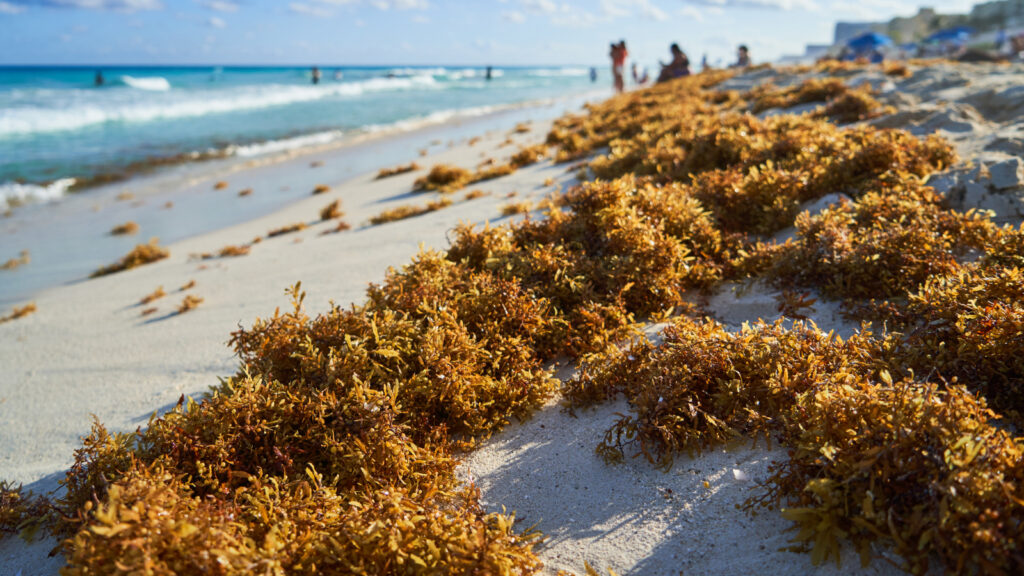iStockphoto / Fabian Montano
Sargassum blooms spell doom for Florida’s Gulf Coast when millions of tons of odoriferous seaweed gets dumped on the white sand beaches, smelling up the entire coast, and ruining the beaches for tourists and locals alike. 2022 set a record for sargassum in Florida with an estimated 22 million tons and this year could be a lot, lot worse.
If the name sargassum rings a bell it is most likely either because you’re a native Floridian like me and have dealt with waves of this stinky seaweed hitting our shores your whole life, OR you know it it through eels, because it’s believed the European eel, American eel, and American conger eel all grow up inside sargassum blooms before heading out to live their lives.
Ultimately, ‘sargassum bloom’ is a story every year because of how much seaweed shows up on the beaches of Florida but some years are considerably worse than others. 2022 set the all-time record with 22 millions ton but the latest report from USF is alarming.
The University of South Florida’s College of Marine Science Optical Oceanography Lab (COOL) published the ‘Outlook of 2025 Sargassum blooms’ and the report shows the latest sargassum numbers from the Caribbean and west Atlantic, as it moves toward the state of Florida. The report states “this total amount was 40% higher than the all-time high in June 2022, which makes 2025 a new record year.”
So, we’ve already set a record this year for the most sargassum ever recorded. What comes next is tracking the flow and how much of it lands on the beaches of Florida and/or how much passes through into the Gulf and off to Mexico.
As of now, it is unclear why there is a record-setting amount of this seaweed in the Caribbean. The report states “Most of these increases are due to both local growth and physical transport, but the exact reasons behind these new historical records need to be investigated.”
@miamiherald Bad news, beachgoers: The seaweed monster is back and it’s expected to be bigger than ever. Scientists at the University of South Florida Optical Oceanography Lab, the point people for tracking the floating mats of seaweed called sargassum, are predicting what could be the state’s worst seaweed season. In the latest report issued April 30, they project 40% more seaweed than the previous record mess of 2022, when stinky, scratchy piles sent many tourists packing and cost cities millions to clean up. The mass of seaweed, which piles up on beaches and collects around marinas and docks, is also forming earlier than usual out in far-off ocean waters. The bloom began in March and reached unprecedented levels by the end of April, said Chuanmin Hu, the professor who runs USF’s Optical Oceanography Lab. What’s to blame? Wind, nutrients, and higher temperatures due to climate change could all be impacting how the sargassum belt forms and moves, he said. “The speculation is this spring, the water temperature is higher than usual in the western Atlantic and the Caribbean Sea at the right time,” Hu said. “And when it’s above the norm, the plants would be happier.” ✍️: Ashley Miznazi 📹/📸:: Al Diaz
Hopefully, for the tourism industry in Florida’s sake, the bulk of all the smelly seaweed passes on by the Sunshine State and heads out into the Gulf and on over to Mexico.
Content shared from brobible.com.

